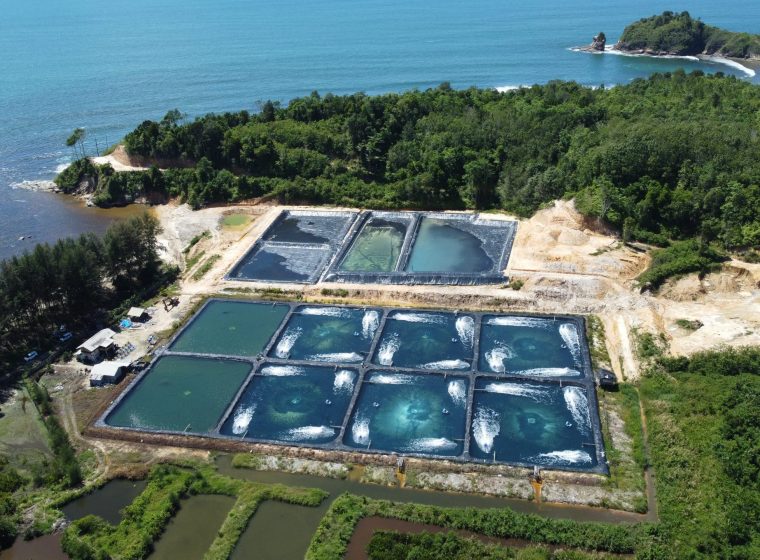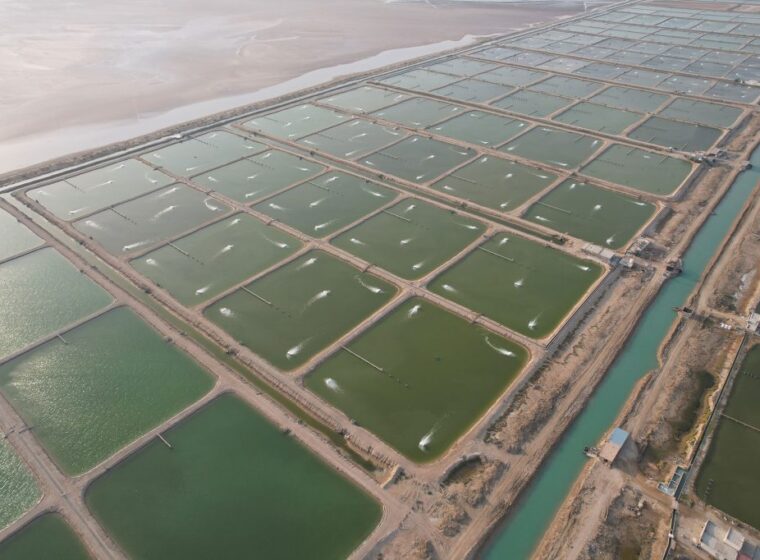Biosecurity for shrimp ponds involves a series of measures to prevent the entry of diseases into the pond area. The scope of biosecurity typically includes both the cultivation ponds and the entire pond area.
As the saying goes, “prevention is better than cure,” biosecurity is one of the best ways to minimize the risk of losses due to diseases during shrimp cultivation. However, its implementation must adhere to the established standards.
Applying biosecurity in shrimp ponds is essential to reduce the risk of cultivation failure. This applies to all types of ponds, ranging from traditional to super-intensive scales.
So, how can we properly apply biosecurity and adhere to the standard guidelines? Let’s explore further in this article.
Also Read: 12 Equipments for Vannamei Shrimp Ponds that Must Be Prepared
Proper Application of Biosecurity
In the application of biosecurity for shrimp ponds, several aspects need to be considered, including juveniles (benur), shrimp feed, water, probiotics, and others.
1. Using High-Quality Shrimp Fry (Benur)
The first step in implementing biosecurity is to select high-quality and certified shrimp fry (benur). Ensure that the juveniles you choose are free from diseases to prevent infections and growth issues in the future.
2. Monitoring Water Quality in the Ponds
Water quality in the ponds is a critical aspect that must be monitored throughout the cultivation process. Regularly test water quality parameters to ensure that the pond water remains in optimal conditions. Additionally, you can add probiotics to improve water quality and enhance the shrimp’s immune system, protecting them from diseases.
3. Paying Attention to Accessibility
The accessibility of the pond, including the entry and exit of vehicles, people, and animals, can act as vectors that carry diseases into the pond. To prevent pathogens from entering the pond, you can implement the following activities:
- Limiting the number of people entering the pond.
- Restricting access to the cultivation area.
- Establishing reporting and authorization procedures for pond entry (all visitors must report their presence).
- To prevent wild animals from entering the pond, you can install deterrents such as bamboo fences, Crab Protecting Line (CPL), and Bird Scaring Line (BSL).
Another biosecurity measure is to use disinfectants at every pond entrance for people and vehicles entering the area. This helps prevent potential pathogens from being carried in by individuals or vehicles.
Also Read: 5 Types of Shrimp Pond Aerators and Their Functions
4. Following Biosecurity Protocols during Juvenile Stocking
During the juvenile stocking process, biosecurity protocols should be strictly followed and monitored, starting from the arrival of the juveniles to their release into the pond. The truck transporting the juveniles should pass through a wheel bath facility before entering the pond area. Additionally, the bags containing the juveniles should be disinfected (by dipping them in a disinfectant). Equally important is the requirement for all personnel involved in the stocking process to disinfect themselves before entering the cultivation pond, especially during manual stocking.
5. Pond Water Management
Implementing biosecurity in shrimp ponds also involves managing the water that flows in and out of the pond. This is typically achieved by providing storage tanks and treatment ponds to filter and disinfect the water before it enters the main pond.
In the storage tanks, physical treatments such as sediment settling, coarse particle filtration, and total organic matter reduction from the water source are conducted. The treatment ponds involve chemical processes aimed at killing pathogens before the water enters the cultivation pond, and one common method is disinfecting the water in the treatment pond. This reduces or eliminates the possibility of pathogens in the water entering the cultivation pond.
Likewise, the water leaving the pond must also be treated before being discharged into the environment to preserve the surrounding ecosystem. Directly discharging water without filtration could lead to environmental pollution and disease outbreaks due to pathogen contamination.
Also Read: Vannamei Shrimp Probiotics and Its Benefits For Cultivation
The Role of Biosecurity in Controlling Diseases in Shrimp Larvae
The presence of disease infections in shrimp ponds is one of the factors leading to failures in cultivation, especially when the infection occurs during the larval stage, causing socio-economic losses.
Viruses and bacteria cause diseases affecting shrimp. Controlling the spread of diseases is crucial to support sustainable aquaculture, and one effective strategy is the implementation of biosecurity measures in shrimp ponds, particularly starting from the stocking phase.
Some biosecurity measures to control diseases in shrimp larvae include:
- Quarantining newly introduced shrimp broodstock.
- Laboratory testing of broodstock for diseases.
- Proper management of solid and liquid waste.
- Regulating personnel and vehicles entering the cultivation area.
- Regularly changing water to ensure its quality.
- Conducting routine health screenings.
Implementing biosecurity to control the spread of pathogens can have positive effects, minimising the occurrence of diseases caused by bacterial and viral infections during the larval-rearing stage.
Consistent adherence to biosecurity policies by all pond personnel greatly supports the success of shrimp disease control. To ensure the success of biosecurity measures, shrimp farmers must document the regulations in writing.
Also Read: How to Properly and Completely Distribute Vannamei Shrimp Fry!
Rely on DELOS for Shrimp Cultivation!
Proper and standardized application of biosecurity is crucial for shrimp cultivation. With biosecurity measures in place, the risk of disease outbreaks that can lead to production losses can be avoided.
If you’re interested in environmentally friendly vannamei shrimp cultivation, DELOS is the right partner for you. DELOS is a leading aquatech company based on science, technology, and operational management, capable of helping you enhance the productivity of your shrimp ponds while practising sustainable and environmentally friendly shrimp cultivation.
The DELOS team consists of competent and dedicated researchers and professionals who ensure the smooth operation of shrimp cultivation in your ponds. Additionally, DELOS’s farm management is integrated with the AquaHero application, which allows you to easily monitor your shrimp ponds daily using your gadgets.
Contact DELOS at contact@delosaqua.com or click the WhatsApp icon on our website www.delosaqua.com to connect with us directly. Enhance the productivity of your ponds with DELOS!




